Morocco, a North African gem located at the crossroads of Europe, Africa, and the Middle East, has long captured the imagination of travelers, historians, and adventurers alike. With its rich cultural heritage, stunning landscapes, and deep-rooted traditions, Morocco is a land where ancient customs meet modern sophistication. It’s a place where you can lose yourself in bustling souks, explore the timeless Sahara Desert, or relax in the tranquil beauty of the Atlas Mountains. Morocco offers an experience unlike any other. Here’s an in-depth look at why Morocco stands out as the most attractive country in Africa.
1. Rich Cultural Heritage
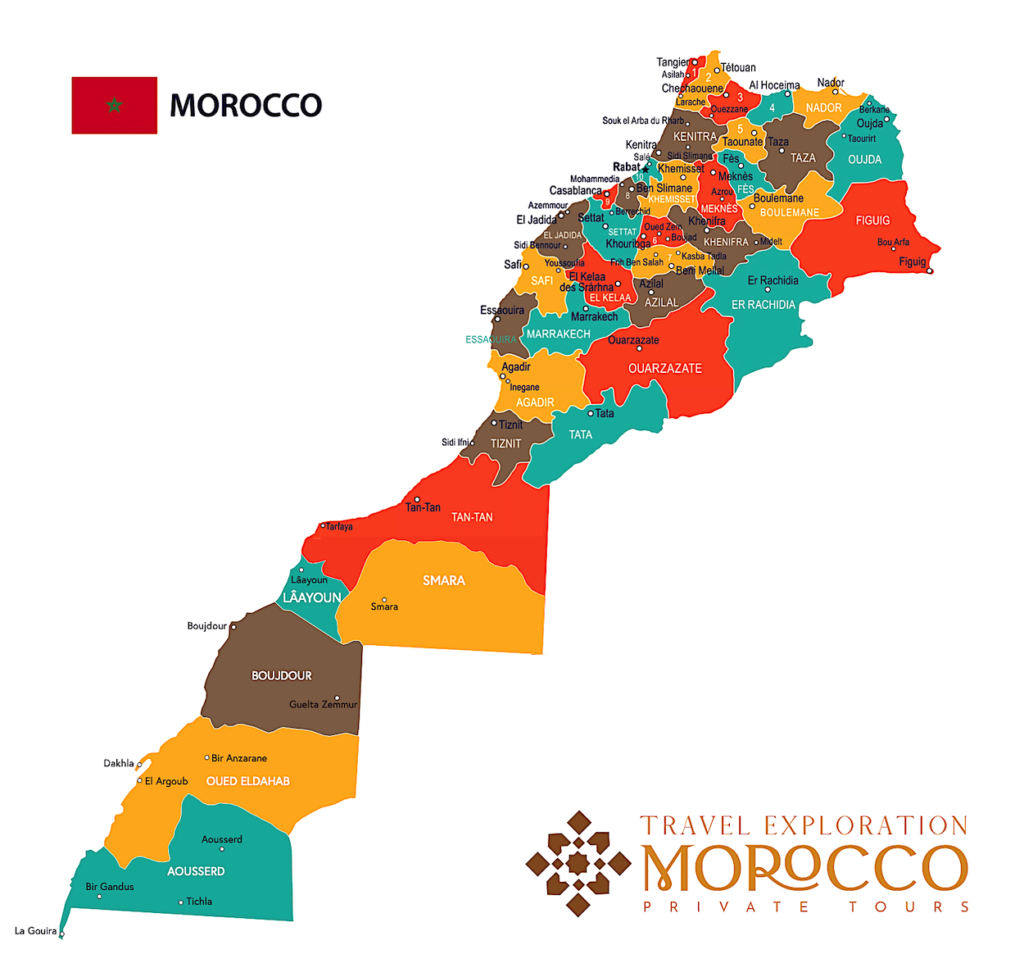
Morocco’s cultural heritage is a vibrant mix of Amazigh, Arab, and some European influences. This unique blend is most evident in the architecture, language, and customs that have shaped Morocco over centuries. From the ancient Roman ruins of Volubilis to the moorish architectural masterpieces in cities like Marrakech and Fes, the country offers an unparalleled journey through time.
- Historical Cities: Morocco is home to four imperial cities: Marrakech, Fes, Meknes, and Rabat, each offering a distinct flavor of Moroccan history and culture. Marrakech, the “Red City,” is perhaps the most famous, known for its bustling markets, grand palaces, and the famous Jemaa el-Fnaa square. Fes, on the other hand, is the spiritual and intellectual heart of Morocco, housing one of the oldest universities in the world, Al-Qarawiyyin.
- Language and Tradition: The official languages of Morocco are Amazigh first then Arabic , but French and English is widely spoken . The rich linguistic diversity reflects Morocco’s openness and the mingling of various cultural streams over centuries. Visitors often find themselves immersed in the traditional music, clothing, and rituals that permeate daily life, such as the celebration of Ramadan or the uniquely Moroccan tea ceremonies.
2. Unparalleled Historical Significance
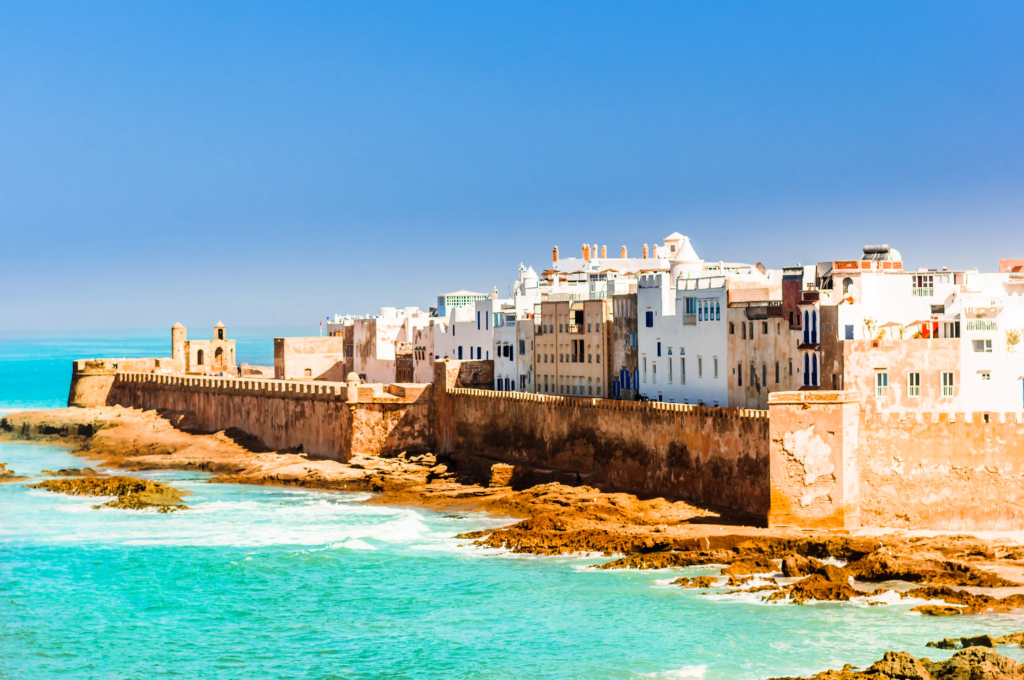
Morocco’s history dates back thousands of years, making it one of the oldest continuously inhabited regions in the world. Morocco has witnessed the rise and fall of many empires. Its strategic location on the northwest corner of Africa has also made it a crossroads for traders, explorers, and conquerors, from the Phoenicians and Romans and French.
- The Medina of Fes: The Medina of Fes is one of the best-preserved medieval cities in the world. It is a UNESCO World Heritage site and walking through its labyrinthine streets is like stepping back in time. The city is home to the University of Al Quaraouiyine, the oldest continuously operating university in the world.
- Roman Ruins: For those interested in ancient history, the Roman ruins of Volubilis offer a fascinating glimpse into Morocco’s pre-Islamic past. The well-preserved mosaics, temples, and triumphal arches show how the Romans once thrived in this North African territory.
3. Breathtaking Natural Landscapes
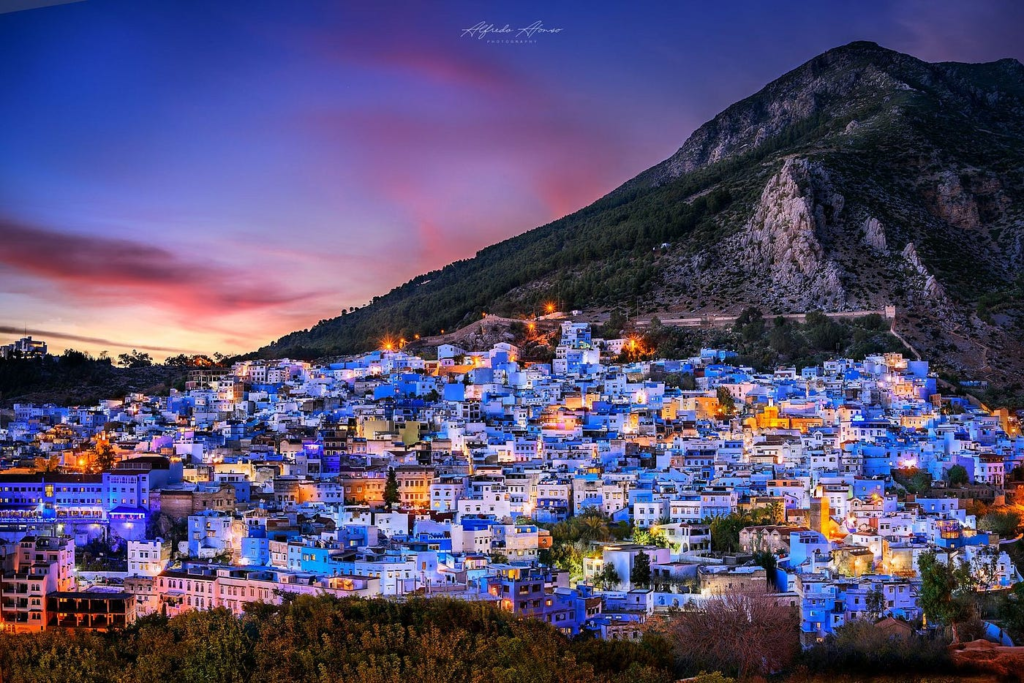
Morocco is a land of dramatic contrasts when it comes to geography. From the rolling dunes of the Sahara Desert to the snow-capped peaks of the Atlas Mountains, the country offers an incredible variety of landscapes that are nothing short of breathtaking. Whether you prefer hiking, camel trekking, or simply soaking in nature’s beauty, Morocco has something for every nature lover.
- The Sahara Desert: No visit to Morocco would be complete without a journey into the Sahara. The vast, golden dunes, particularly near Merzouga, offer an otherworldly experience that attracts adventurers and photographers from across the globe. Visitors can ride camels across the dunes, spend a night in traditional Berber tents, and gaze up at some of the clearest night skies you’ll ever see.
- The Atlas Mountains: Stretching across the country from the Atlantic coast to the edges of the Sahara, the Atlas Mountains are a hiker’s paradise. The range offers lush valleys, dramatic gorges, and picturesque Berber villages. Mount Toubkal, the highest peak in North Africa, provides a challenging climb for mountaineers and rewards them with panoramic views of the surrounding landscapes.
- The Coastline: Morocco boasts over 3.500 klm of coastline along the Atlantic Ocean and the Mediterranean Sea. Coastal cities like Essaouira and Agadir and Dakhla are known for their beautiful beaches, seafood, and relaxed atmosphere. Surfing, windsurfing, and kitesurfing have become popular activities in these coastal towns, attracting both novices and professionals.
4. Exquisite Cuisine

One of the most appealing aspects of Morocco is its rich culinary heritage, which is widely regarded as one of the best in the world. Moroccan food is a blend of Amazigh, Arabic, and Andalous influences, resulting in a unique and diverse array of flavors that can only be found in this part of the world.
- Tagine and Couscous: These are perhaps the two most famous Moroccan dishes. Tagine, named after the earthenware pot in which it’s cooked, is a slow-cooked stew of meat, vegetables, and an array of spices such as saffron, cumin, and ginger. Couscous, a staple in Moroccan homes, is often served with vegetables and meat and is traditionally enjoyed as a family meal on Fridays.
- Mint Tea: Known as the “Moroccan whiskey,” mint tea is an integral part of Moroccan hospitality. The tea, typically made from green tea and fresh mint leaves, is poured from a height into small glasses, symbolizing generosity and warmth.
- Street Food: Street food in Morocco is an adventure for the taste buds. In the bustling markets, you’ll find vendors selling everything from kebabs and freshly baked bread to sweets like chebakia and sfenj. The night markets, especially in cities like Marrakech, offer a sensory overload with the smells of grilled meats, spices, and sweet pastries filling the air.
5. Vibrant Souks and Handicrafts
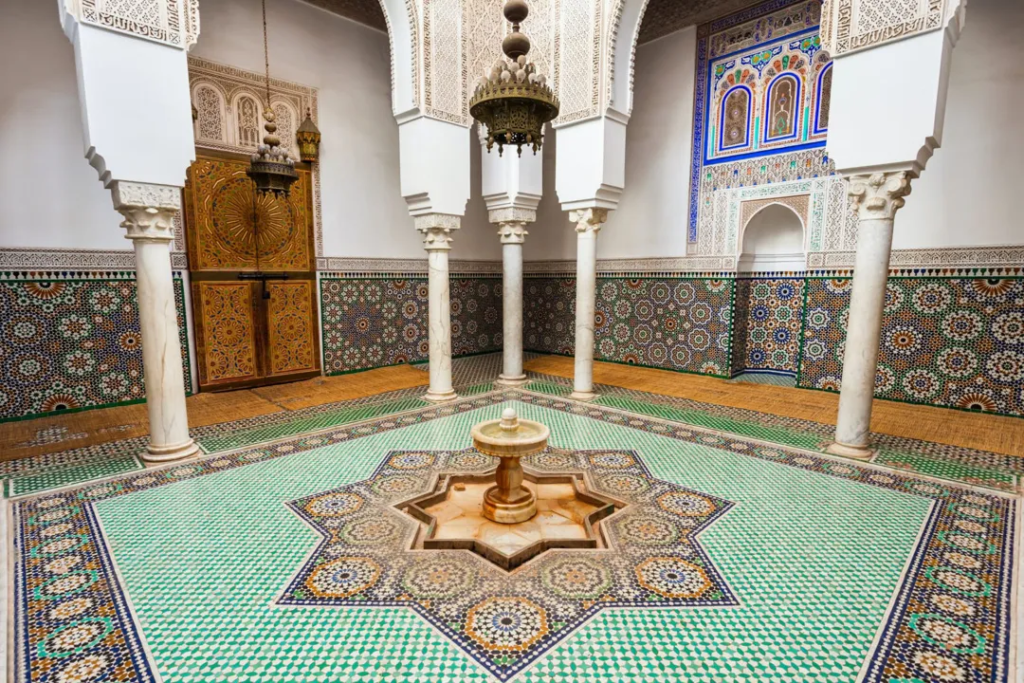
Morocco’s souks, or traditional markets, are world-renowned for their vibrant energy and variety. These labyrinthine bazaars are a treasure trove for shoppers looking for authentic Moroccan products, from hand-woven carpets to intricately designed lanterns.
- The Souks of Marrakech: Perhaps the most famous souks in the country are found in Marrakech’s medina. Here, the streets are lined with stalls selling everything from spices and leather goods to pottery and textiles. Bargaining is a part of the experience, and shoppers can spend hours exploring the endless alleys, interacting with local artisans, and finding unique souvenirs.
- Moroccan Handicrafts: Morocco is known for its exquisite handicrafts, many of which are made using techniques passed down through generations. Traditional Moroccan carpets, for instance, are hand-woven by Berber women and come in a wide range of colors and patterns. Moroccan leather, particularly from the tanneries in Fes, is world-famous for its quality. Visitors can also purchase stunning ceramic pieces, intricate woodwork, and beautiful jewelry, all handcrafted by local artisans.
6. Warm and Welcoming People

One of the top reasons travelers fall in love with Morocco is the warmth and hospitality of its people. Moroccans are known for their generosity and friendliness, and visitors are often treated like family. Whether you’re enjoying tea with a Berber family in the mountains or chatting with shopkeepers in the medina, you’ll find that Moroccans are eager to share their culture and make you feel at home.
- Amazigh Culture: The Amazigh are the indigenous people of Morocco and have a rich cultural heritage that is still very much alive today. Visiting Amazigh villages in the Atlas Mountains or the Sahara Desert offers a glimpse into a way of life that has remained largely unchanged for centuries. Visitors are often invited into homes to share meals and learn about traditional Amazigh customs and music.
7. Affordable Luxury

For travelers seeking an affordable yet luxurious experience, Morocco offers the perfect balance. While the country is home to high-end hotels and resorts, it also offers a wide range of affordable accommodations that don’t compromise on comfort or style.
- Riads: A stay in a traditional Moroccan riad is an experience in itself. These charming guesthouses, typically built around a central courtyard, offer a peaceful retreat from the hustle and bustle of the city. Many riads are beautifully decorated with traditional Moroccan tiles, carvings, and textiles, offering guests an authentic Moroccan experience without breaking the bank.
- Spas and Hammams: Morocco is known for its luxurious spas and hammams (traditional bathhouses). Whether you’re staying in a high-end resort or a more affordable riad, you’ll have access to a range of spa treatments, including massages, facials, and body scrubs using locally sourced ingredients like argan oil and rose water.
8. Festivals and Events

Morocco’s calendar is packed with festivals and events that celebrate its rich culture, history, and traditions. These events offer visitors a unique opportunity to experience Moroccan life up close and take part in the country’s vibrant celebrations.
- Marrakech International Film Festival: One of the most prestigious film festivals in Africa, the Marrakech International Film Festival draws filmmakers and actors from around the world. It’s a glamorous event that showcases the best of international cinema while celebrating the art of filmmaking in Morocco.
- Fes Festival of World Sacred Music: Held annually in the spiritual city of Fes, this festival brings together musicians from all over the world to perform traditional and contemporary sacred music. It’s a celebration of peace, spirituality, and unity, and draws a diverse crowd of music lovers from around the globe.
- Gnaoua World Music Festival: The coastal town of Essaouira hosts the annual Gnaoua World Music Festival, which celebrates the traditional music of the Gnaoua people, descendants of African slaves. The festival is a vibrant and energetic event, with performances taking place in the town’s streets and public squares.
9. Gateway to Africa
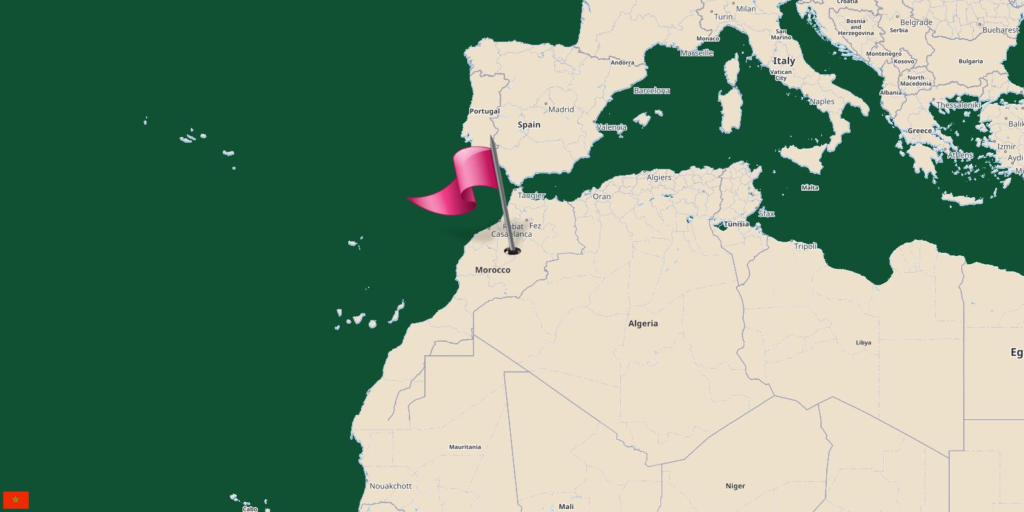
Morocco’s strategic location makes it the perfect gateway to Africa for travelers coming from Europe and beyond. With frequent flights from major European cities and an increasing number of direct flights from North America, Morocco is easily accessible for international travelers.
- Modern Infrastructure: Morocco boasts a modern and efficient infrastructure that makes traveling around the country a breeze. The country’s extensive network of trains, buses, and highways ensures that visitors can easily explore both its cities and more remote regions. The high-speed train connecting Casablanca and Tangier is a testament to Morocco’s commitment to modernizing its transportation system.
- Visa-Free Travel: For citizens of many countries, including the European Union and the United States, Morocco offers visa-free travel for stays of up to 90 days, making it an attractive destination for tourists looking for a hassle-free vacation.
Conclusion: Morocco – A Land of Endless Discovery
From its rich history and cultural heritage to its stunning landscapes and warm hospitality, Morocco is a country that offers something for everyone. Whether you’re seeking adventure in the Sahara Desert, exploring ancient cities, or simply enjoying the world-class cuisine, Morocco captivates the heart and soul. Its unique blend of tradition and modernity, combined with its affordability and accessibility, makes it the best and most attractive country in Africa for travelers.
Read more: Top 10 Most Attractive Countries in Africa








